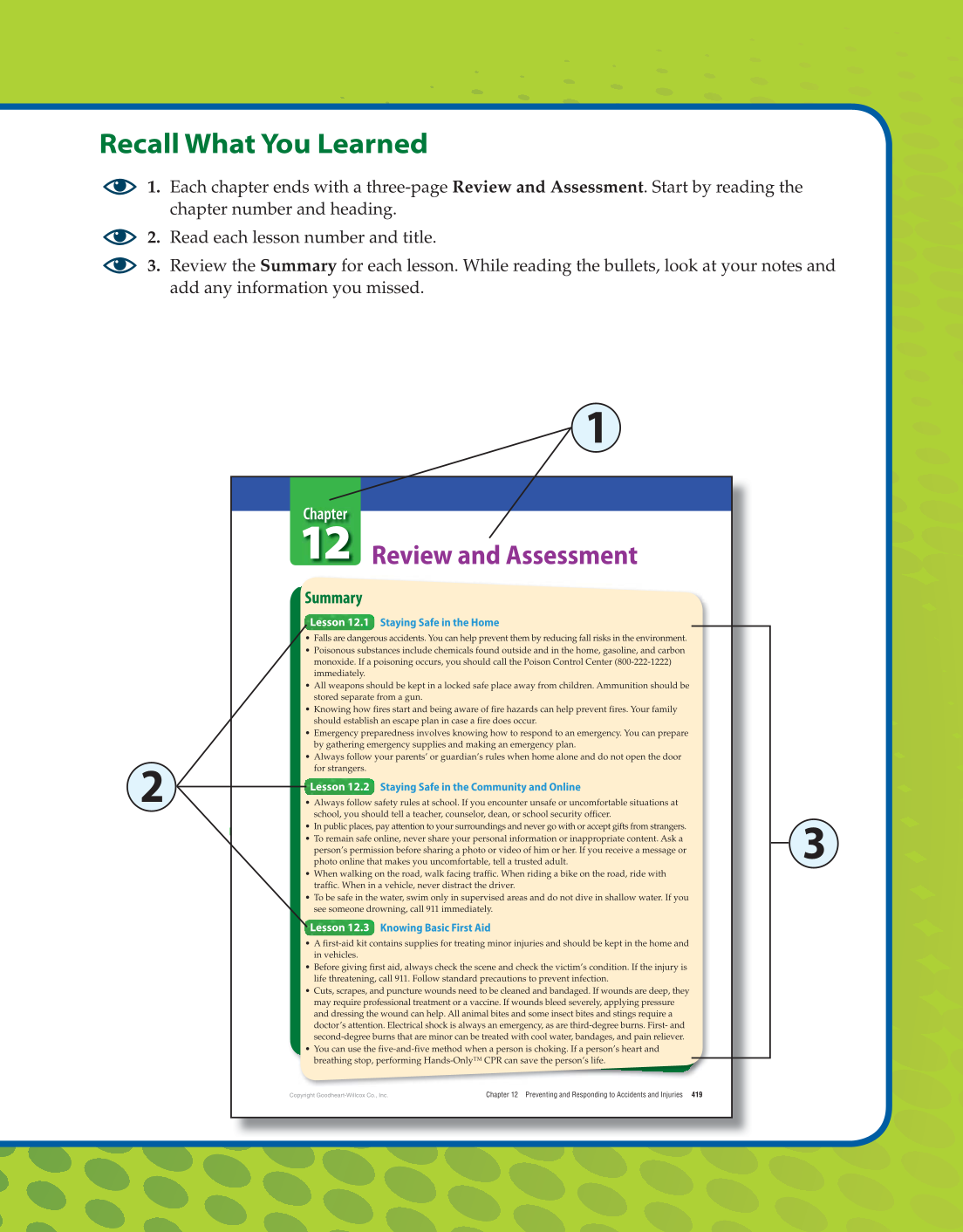Recall What You Learned 1. Each chapter ends with a three-page Review and Assessment. Start by reading the chapter number and heading. 2. Read each lesson number and title. 3. Review the Summary for each lesson. While reading the bullets, look at your notes and add any information you missed. Copyright Goodheart-Willcox Co., Inc. Chapter 12 Preventing and Responding to Accidents and Injuries 419 Summary Lesson 12.1 Staying Safe in the Home • Falls are dangerous accidents. You can help prevent them by reducing fall risks in the environment. • Poisonous substances include chemicals found outside and in the home, gasoline, and carbon monoxide. If a poisoning occurs, you should call the Poison Control Center (800-222-1222) immediately. • All weapons should be kept in a locked safe place away from children. Ammunition should be stored separate from a gun. • Knowing how fires start and being aware of fire hazards can help prevent fires. Your family should establish an escape plan in case a fire does occur. • Emergency preparedness involves knowing how to respond to an emergency. You can prepare by gathering emergency supplies and making an emergency plan. • Always follow your parents’ or guardian’s rules when home alone and do not open the door for strangers. Lesson 12.2 Staying Safe in the Community and Online • Always follow safety rules at school. If you encounter unsafe or uncomfortable situations at school, you should tell a teacher, counselor, dean, or school security officer. • In public places, pay attention to your surroundings and never go with or accept gifts from strangers. • To remain safe online, never share your personal information or inappropriate content. Ask a person’s permission before sharing a photo or video of him or her. If you receive a message or photo online that makes you uncomfortable, tell a trusted adult. • When walking on the road, walk facing traffic. When riding a bike on the road, ride with traffic. When in a vehicle, never distract the driver. • To be safe in the water, swim only in supervised areas and do not dive in shallow water. If you see someone drowning, call 911 immediately. Lesson 12.3 Knowing Basic First Aid • A first-aid kit contains supplies for treating minor injuries and should be kept in the home and in vehicles. • Before giving first aid, always check the scene and check the victim’s condition. If the injury is life threatening, call 911. Follow standard precautions to prevent infection. • Cuts, scrapes, and puncture wounds need to be cleaned and bandaged. If wounds are deep, they may require professional treatment or a vaccine. If wounds bleed severely, applying pressure and dressing the wound can help. All animal bites and some insect bites and stings require a doctor’s attention. Electrical shock is always an emergency, as are third-degree burns. First- and second-degree burns that are minor can be treated with cool water, bandages, and pain reliever. • You can use the five-and-five method when a person is choking. If a person’s heart and breathing stop, performing Hands-Only™ CPR can save the person’s life. Chapter 12 Review and Assessment 3 2 1
